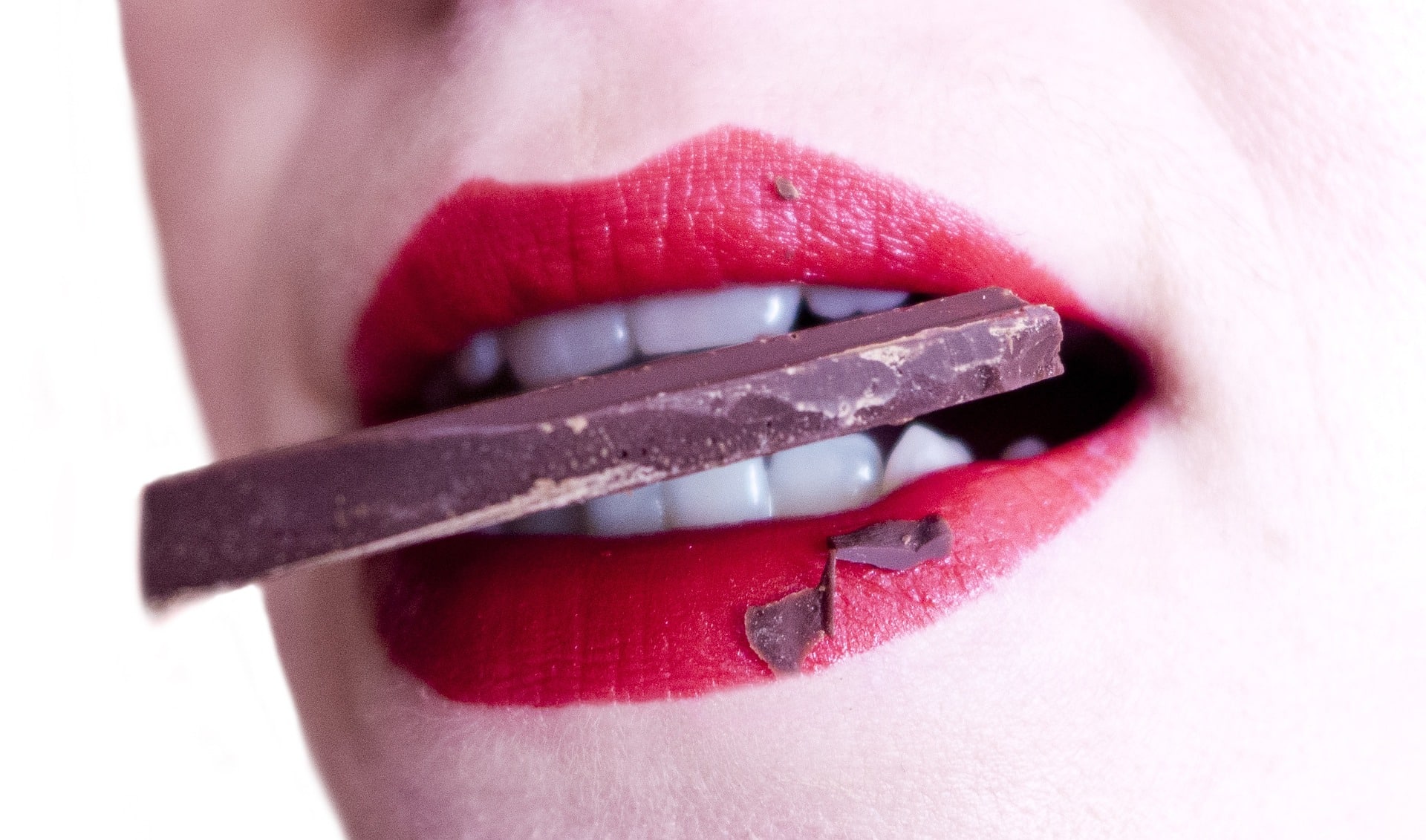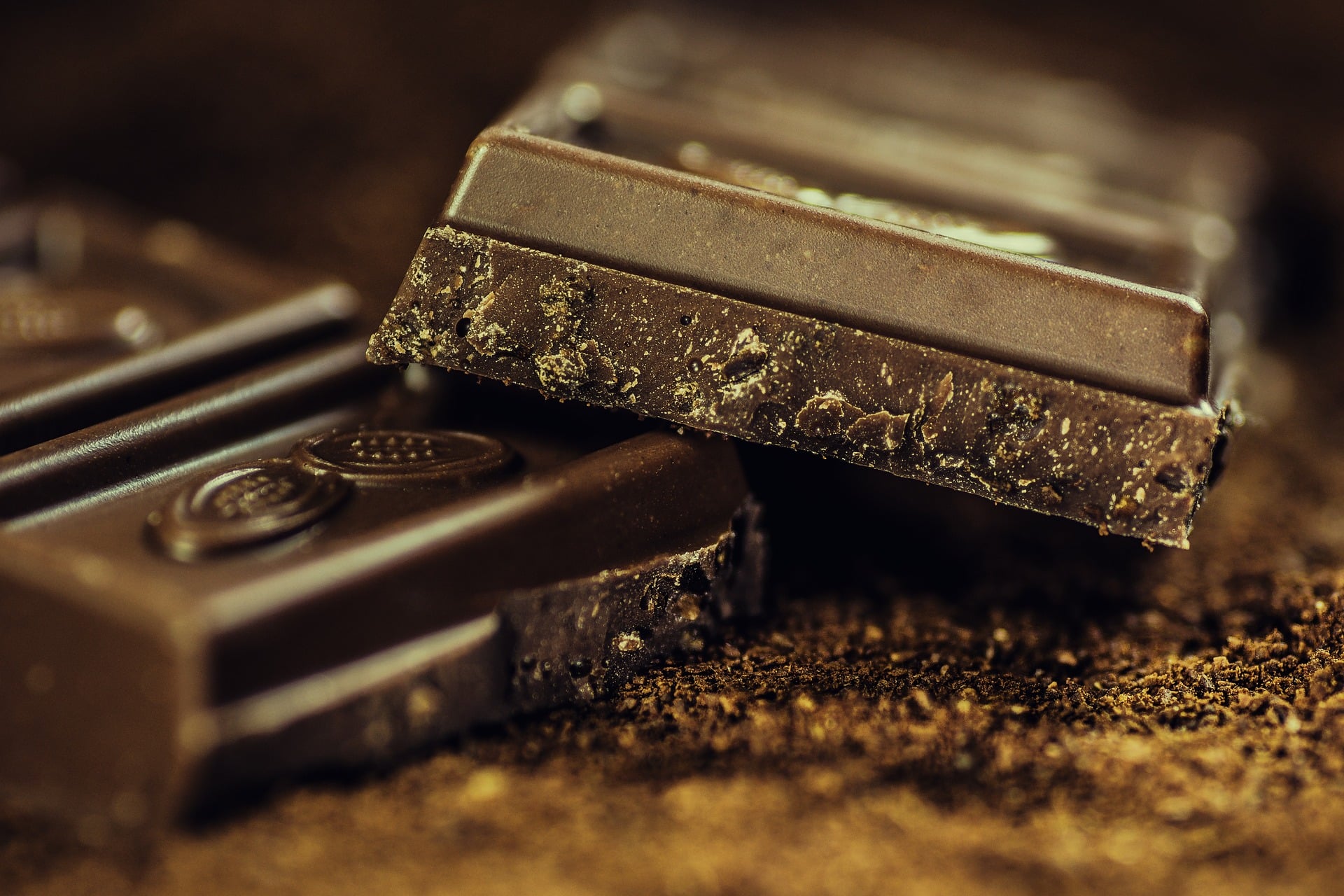
One of the most debated topics around the chocolate and its derivatives, in addition to Calories and which of them is the healthiest, is why the chocolate turns white.
A patina that often appears on the surface of the chocolate bar and bonbons and that, at first glance, could make the consumer think that the chocolate has expired. The answer is no: the cause is a thermal shock.
The presence of a white patina (not stains, which could be mold) can raise some doubts about the state of preservation of the chocolate, but also about its expiration date and whether it can be eaten or not. The explanation for the formation of the white patina on chocolate is quite "scientific". It could be explained as a chemical process that refers to the separation of fats and temperatures.
- dark chocolate generally does not expire
- chocolate with milk, with nuts or fillers have an expiration date printed on the hashtag. And this date is what counts
- the white patina of the chocolate is not signal expiration date
- if the chocolate has a white patina, it is still edible
- the quality of the chocolate depends on factors such as: opening, type of chocolate, conservation
- chocolate that has been open for a long time may lose its aroma and flavor
- do not consume chocolate more than two months after the expiration date
- keep chocolate in the fridge in an airtight container
- chocolate can be frozen, but it should be thawed in the refrigerator and not at room temperature
Why does chocolate turn white?
Why is it sometimes formed and sometimes not?
The less porous the chocolate, the less this patina will form.
This process that leads to the appearance of white chocolate on the surface has been studied and analyzed by a team of researchers:
- from the Technical University of Hamburg,
- from the German research center DESY
- from the Nestlé chocolate company
by using a dedicated X-ray machine, named: PETRA III.

How can you cite this white layer to come out?
In order to avoid the formation of this "white film" effect, the confectionery industry has decided to invest significant amounts of money in the search for a method that can counteract this unpleasant visual effect and lead to a reduction in annual losses. For this reason, for some years now, specific studies have been carried out aimed at identifying more efficient production techniques than reduce the formation of pores in chocolate.
Is it still edible?
It is good to clarify that chocolate is considered a non-perishable food, that is, it does not expire or spoil. However, very old chocolate, while probably still safe to consume swr, will lose its original flavor entirely.
A different case will have to be made if the chocolate tablet contains fruits, nuts such as nuts, hazelnuts y almonds, or milk-based creams, candy, etc. An expiration date is always indicated on the packaging, that is, within that period the qualities of the chocolate remain unaltered. If the filled bar has been expired for more than two months, you may experience dolor abdominal, vomiting, nausea or diarrhea because the chocolate filling may have grown moldy.
What does the storage of chocolate depend on?
Let's start by saying that the quality of chocolate, that is, the aroma and flavor above all, vary over time, but also due to various factors, including:
- storage form,
- storage temperature,
- package status (closed, open),
- type of chocolate
how to store chocolate
To avoid the formation of this "white film" effect, the confectionery industry has reduced the creation of pores in the chocolate and is developing techniques to prevent chocolate from being affected by heat shock which could obviously compromise the palatability of the chocolate. At home you can also adopt conservation rules simple so that the bar and the chocolates do not turn white:
- keep the chocolate at a temperature between 14 and 18°
- don't keep chocolate too long
- fridge: store the chocolate in the fridge in an airtight container (so that it does not absorb the odors of other foods) and in the lowest part, where the temperatures are less cold;
- freezer: in this way the chocolate is preserved for a long time. Obviously, the chocolate should be placed in a bag to prevent it from freezing or absorbing odors. The Thawing Phase No. It must be done at room temperature but in the refrigerator, so that the chocolate does not suffer sudden changes in temperature;
- Keep the chocolate away from sources of light and heat.
- do not keep the chocolate hot or at room temperature in warm areas (in summer it is always better to keep it in the fridge).
Chocolate Antioxidant Flavonoids
If it is true that the best foods are also the most dangerous for health, chocolate seems to be the classic exception that confirms, at least in part, the rule. The dark chocolate, Thanks to its cocoa content, it represents one of the most generous food sources of flavonoids, recognized antioxidants present in foods of vegetable origin or derivation, such as tea, red wine, citrus fruits and berries.
On the other hand, whoever wants to benefit as much as possible from the precious load of antioxidants in chocolate must get used to the bitter aspects of dark chocolate, giving up the creamy flavor of white chocolate and the velvety flavor of milk bars; these two variants, due to the use of other ingredients, contain a much lower percentage of flavonoids.
En general, the higher the percentage of cocoa, the greater the presence of flavonoids. On average, 100 grams of dark chocolate contains 50-60 mg, while in a similar amount of milk chocolate we find only 10 mg. In white chocolate there is often not a single flavonoid.

Effects of flavonoids
Why are flavonoids in chocolate so important to our health?
These natural antioxidants limit the negative effects associated with:
- Elevated plasma cholesterol levels, especially its "bad" fraction attributable to LDL lipoproteins,
- hypertension,
- systemic inflammation,
- “hardening” of the vascular walls.
By doing so, flavonoids protect arteries from damage from atherosclerosis and prevent cardiovascular diseases such as heart attacks and strokes.
Furthermore, it is hypothesized that these antioxidants may play a key role in the prevention of age-related cognitive decline.
Note: keep in mind that the chocolate, In addition to flavonoids that reduce blood pressure, it also contains Stimulants and caffeine, that tend to increase it, especially in predisposed subjects.
All these qualities are not altered by the presence of the white patinna that appears on the chocolate over time.
ideal consumption of chocolate
What chocolate to choose?
It is a good rule to choose a chocolate with the highest possible cocoa content. On the other hand, not everyone appreciates the bitter taste of dark chocolate. For educational purposes, it is recommended to start with foods that contain cocoa percentages equal to or greater than 65%, and then gradually increase this value to give the palate time to get used to it. By "instructing" him in this regard, which is absolutely doable with a little patience, the attraction to sweets and especially sweet foods will also decrease, positively affecting health.
Products containing caramel or other particular fillings should be avoided, because they are sweeter, more caloric and poorer in flavonoids. The same applies to chocolate creams. Also, although chocolate with a large amount of cocoa does not go bad, let's remember that those with more things or those with less amount of cocoa do go bad. In these cases, we always have to keep in mind the expiration date.
How much chocolate to eat?
So chocolate yes, but in moderation. More freedom, as always, for athletes and those who lead an active life, but even in this case, excesses are not justified.
LARN recommends an average serving of 30g; be careful though! It is an amount established in compliance with a frequency of sporadic or "single" consumption. If you want to consume dark chocolate every day, you can settle for an amount between 5 and 15 g.